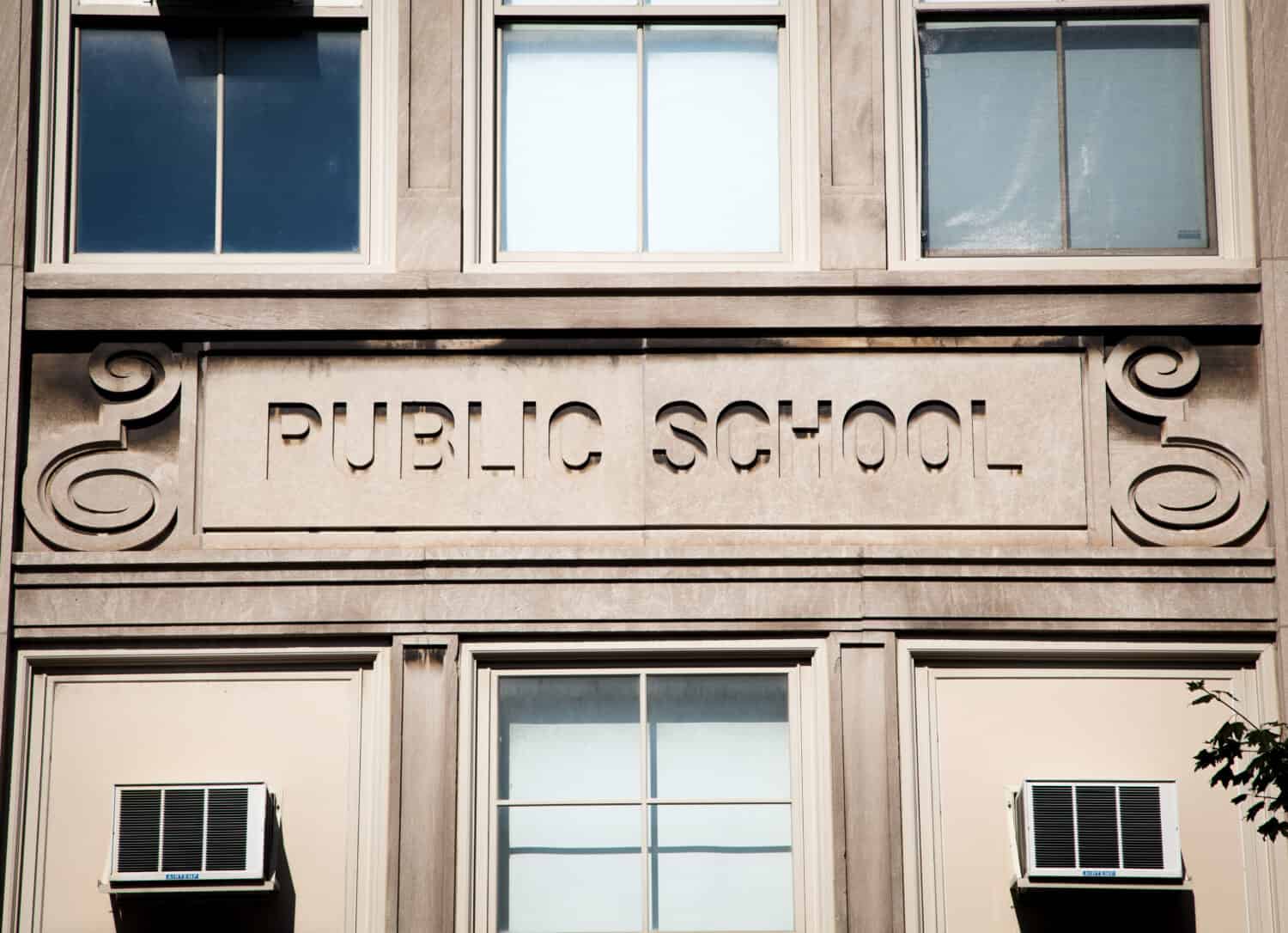South Dakota’s rich and captivating history spans thousands of years. Various indigenous tribes, such as the Lakota, Dakota, and Nakota Sioux, have long called the region their home. European activity began in the late 18th century with the arrival of the French and Spanish explorers. In 1803, the U.S. acquired the land through the Louisiana Acquisition.
South Dakota’s educational history dates back to the mid-19th century, long before it officially became a state in 1889. The early years of education in the territorial state were marked by the establishment of mission schools to educate the Native Americans. Founded in 1860 in Bon Homme, Territorial School was the first public school established in South Dakota and ran for only three months.
Today’s post will explore the nine oldest schools in South Dakota. We’ll delve deeper into the schools’ unique histories, changes that occurred over the decades, notable alumni that attended, and the current educational offerings at the schools. Without much ado, here are the oldest schools in the state.
Augustana University
2001 S Summit Ave, Sioux Falls, SD 57197
Augustana University is a private Lutheran university with an interesting history in Sioux Falls. The school claims 1860 as its founding year, though it was never domiciled in South Dakota until later in 1888. This makes most residents identify the University of South Dakota as the state’s oldest institution of higher learning, not Augustana.
Augustana University traces its roots as far back as 1835, when the Lutheran Scandinavian immigrants established the Hillsboro Academy in Illinois, later renamed The Literary and Theological Institute of The Lutheran Church of the Far West in 1846.
A split in the church leadership in 1860 led to the establishment of the Augustana College and Seminary in Chicago. Augustana University identifies this as its founding year. Further disagreements in the church leadership led to the school relocating to Marshall, Wisconsin, in 1869, then Beloit, Iowa, in 1881, and finally Canton, South Dakota, in 1888.
The Lutheran Normal School began in 1889 in Sioux Falls to educate teachers. City leaders and businessmen lobbied the Augustana College and Seminary to relocate to Sioux Falls, with a merger with the Lutheran Normal School occurring in 1918.
The new school was renamed Augustana College and Normal School. It dropped the “Normal School” tag in 1926. The Augustana Academy, which handled the secondary section, remained on its Canton site till its final closure in 1971, independent of the college.
The school was renamed Augustana University in 2015. The university offers over 53 majors, 34 minors, and 15 pre-professional programs. Notable figures who attended Augustana include Robert M. Berdahl, former Chancellor of UC Berkeley, and Lee Schoenbeck, a member of the South Dakota Senate.
Augustana University in the News
On July 25, 2023, Rink Live reported that Augustana University is welcoming forward Ryan Naumovski to their hockey team. Naumovski played four seasons at Niagra University in New York; when he entered the transfer portal, he was recognized for his talent and development potential. Augustana's hockey coach, Garrett Raboin, said that Naumovski is a creative and talented player on the ice who can play from a variety of situations.
On July 11, 2023, Augustana University announced that they'll be home to South Dakota's first bioinformatics major and minor starting this fall. According to the university, bioinformatics involves the “application of computational tools to biology”. It's an important field of study in modern science; the university looks forward to being able to offer this new opportunity to students. The major will consist of courses from multiple departments, with a bioinformatics capstone program during the student's senior year.
On June 1, 2023, Augustana University announced that their Nursing Class of 2022 achieved the highest NCLEX pass rate in South Dakota. 97.5% of the class passed the exam, which is a licensure test to determine whether the examined will be allowed to practice nursing in the state of South Dakota. 79 of the 81 students who took the exam from this class passed on the first try, an impressive feat. This pass rate is roughly 17% higher than the national average; a university spokesperson said that it's proof that the school has a stellar nursing program that is able to prepare students for the road ahead.

©Drazen Zigic/Shutterstock.com
University Of South Dakota
414 E Clark St, Vermillion, SD 57069
The oldest school still operating in the state is the University of South Dakota in Vermillion. It was founded in 1862 by the Dakota Territorial Legislature, 27 years before the state joined the union. The school is a comprehensive public liberal arts university governed by the South Dakota Board of Regents.
In 1864, the First Territorial Legislature identified Vermillion as the location for the Territorial’s first university. This led to the establishment of the first permanent schoolhouse in the community, which quickly shut down due to a major flood. The authorization for establishing the University never materialized until twenty years later due to underfunding.
The University opened classes in 1883 under the auspice of the privately incorporated University of Dakota, created by the citizens of Clay County. The school operated on a loaned space in downtown Vermillion and moved to Old Main later that year with 83 students.
The school’s first academic unit was the College of Arts and Sciences, established in 1883. By 1889 when South Dakota became a state, the school’s population had expanded to over 500 students. The School of Law began operating in 1901, while the School of Medicine opened in 1907.
The school sits on a 216-acre campus on the bluffs next to the Missouri River. It currently serves roughly 9,971 students undertaking over 200 undergraduate and graduate programs.
Some notable alumni include John H. Lawrence, a physicist and physician who pioneered nuclear medicine; Allen Harold “Al” Neuharth, founder of USA Today; and John Thune, minority whip of the U.S. Senate.

©Jacob Lund/Shutterstock.com
Flandreau Indian School
1132 N Crescent St, Flandreau, SD 57028
Flandreau Indian School is a boarding school in Flandreau for Native Americans. The school is located off-reservation and is operated by the Bureau of Indian Education(BIE.) The school traces its history back to 1872 and is the oldest continuously operating Native American boarding school in the U.S.
The Presbyterian Church established the Flandreau Indian School as a mission school to educate and spread Christianity among Native Americans. It served kids in grades 1-6. The federal government took over operations at the school in 1877. The school opened its boarding section in 1892, adding high school classes later. It primarily served Santee, Sisseton, and Wahpeton Sioux indigenous students.
The Lakota campaigned for the school’s closure in the 1940s but did not succeed. The school is now open to students who are members of federally recognized native tribes. The federal government covers the cost of classes, room, and board for students.
In the 19th and 20th centuries, such federal boarding schools served to assimilate Native American students to the dominant Anglo-American culture, teaching English and Christianity. The schools have become centers of second chances, offering education to minorities and the underprivileged.
The school has changed names several times and was once known as Flandreau Indian Vocational High School and Riggs Institute.

©iStock.com/Caiaimage/Chris Ryan
Pine Ridge School
101 Thorpe Cir, Pine Ridge, SD 57770
Pine Ridge School is a boarding school for Native Americans on the Pine Ridge Indian Reservation, Oglala Lakota Nation, in the Southwest Corner of South Dakota. The school serves roughly 1,000 Oglala Lakota kids in kindergarten through twelfth grade.
The school’s history traces back to 1879, by the U.S. government. The foundation for the schoolhouse was laid on February 8th, 1879, with six Sioux Chiefs present. Here’s a historical excerpt by Pine Ridge Agency detailing the establishment of the school:
“At twelve o’clock noon of this date, the cornerstone of the School House at Pine Ridge Indian Agency was laid, and the following named Sioux Chiefs were present: Red Cloud, Red Dog, American Horse, Little Wound, Lone Bear, Slow Bull, Old Man Afraid of His Horses. The Oglala Sioux, under Red Cloud, are in a peaceable and well-disposed condition, and the sentiment of the tribe is, and has been, that they particularly want their children “educated in the English language. Education, intelligence, and virtue, when acquired, make every person strong.”
The initial schoolhouse was one hundred feet long and thirty-four feet wide. However, the building was razed down by a fire in 1893. The school shifted half a mile away across White Clay Creek to separate it from the Pine Ridge Agency. The new school opened in 1897.
Pine Ridge today is located at the west end of Pine Ridge Village. The current school building was built in 1995 as a two-story building that houses K-12 grades and boarding sections. It operates under the Bureau of Indian Education (BIE.) The school recently introduced a Lakota dual immersion program to preserve the native language.

©Sergey Novikov/Shutterstock.com
Dakota State University
820 Washington Ave N, Madison, SD 57042
Dakota State University is a public university in Madison, SD, offering undergrad and graduate programs to over 2,740 students on its 240-acre campus. The South Dakota Board of Regents governs the school.
The school began in 1881 as a normal school named Madison Normal School. It was the first school dedicated to training teachers within the Dakota Territory. While it hasn’t shifted locations, the school has undergone numerous name changes over the last century.
The school first changed names in 1902 to Madison State Normal School. The name then changed to Eastern State Normal School in 1921, Eastern State Teachers College in 1927, General Beadle State Teachers College in 1947, General Beadle State College in 1964, and Dakota State College in 1969. Once it attained university status in 1989, it switched to Dakota State University.
The school houses four academic colleges, the College of Education, the College of Business and Information Systems, the Beacom College of Computer and Cyber Sciences, and the College of Arts and Sciences. In 2004, The National Security Agency designated the school as a National Center of Academic Excellence in Information Assurance Education.
Notable alumni include Shantel Krebs, a former South Dakota Secretary of State; Richard Barrett Lowe, 42nd Governor of American Samoa; and Susan J. Koch, Chancellor of the University of Illinois-Springfield.

©Drazen Zigic/Shutterstock.com
University of Sioux Falls
1101 W 22nd St, Sioux Falls, SD 57105
The University of Sioux Falls is a private, Christian liberal arts university in Sioux Falls. It is affiliated with the American Baptist Churches USA. The school opened in 1883 and currently serves roughly 1,337 students in undergraduate and graduate programs.
Pastors and Delegates of the nine Baptist churches, in a meeting in 1872, adopted a resolution to establish a learning institution that would offer a general and complete education to their youth “under distinctly Christian influence.” The institution opened its doors in September of 1883.
It operated under the name Dakota Collegiate Institute, offering collegiate and high school programs. The institution changed its name to Sioux Falls University in 1885. The secondary program operated as the Academy, and the collegiate section branded Sioux College.
While the college expanded, the Academy section experienced declining populations and officially shut down in 1925. The Sioux University expanded by acquiring four Baptist institutions that had ceased to operate between 1929-1931. The mergers led to the school adopting the name Sioux Falls College officially.
The school lost its accreditation during the world war. Reuben P. Jeschke, the college’s president from 1953-1970, helped the school regain full regional accreditation in 1958. He also oversaw the expansion of the school campus, with seven major buildings erected in seven years.
The school changed its name to the University of Sioux Falls in 1995. Notable alumni that have attended the school include Crystal Johnson, States Attorney for Minnehaha County; Brian Hansen, a punter in the NFL; and James Earl “Trey” Pipkins III, an offensive tackle for the Los Angeles Chargers.

©NDAB Creativity/Shutterstock.com
Black Hills State University
1200 University St, Spearfish, SD 57799
Black Hills State University is a public university in Spearfish governed by the South Dakota Board of Regents. The school was established in 1883 by the Dakota Territorial Legislature. Currently, the school serves 3,346 students on its 123-acre campus. It also has a satellite campus in Rapid City.
The Dakota Territorial Legislature ratified the establishment of a second nominal school, similar to the Dakota College established by the Congregational Church. Joseph Ramsdell collected money from donors and bought the land offered by John Mauer for $800. The school began as Dakota Territorial Normal School, with a temporary building constructed in 1883.
The school almost fell into bankruptcy in 1884, reopening in 1885, offering high school classes and one year of post-high school. Dakota Territorial Normal School was authorized to adopt a four-year curriculum in 1924 for a Bachelor of Science in Education degree.
The school changed its name to Black Hills Teachers College in 1941. During World War Ⅱ, the college created a 12-week civil aviation course, with graduates proceeding to join the military. In recognition of broadening academic offerings, the school changed its name to Black Hills State College.
The state legislature voted to change the college’s name to Black Hills State University, effective July 1st, 1989. The university offers over 120 majors and minors,17 pre-professional programs, eight master’s degree programs, and seven associate degree programs.
Notable figures who attended the school include Brian Shaw, a professional strongman and four-time winner of the World’s Strongest Man; Roger Tellinghuisen, a former South Dakota Attorney General; and Raymond W. Carpenter, a United States Army Major General.

©4 PM production/Shutterstock.com
St. Francis Indian School
502 Warrior Dr, St Francis, SD 57572
St. Francis Indian School is a Native American school serving pre-kindergarten through twelfth-grade kids. The school is tribally-controlled and affiliated with the Bureau of Indian Education(BIE.)
The school’s history traces back to the mid-ninth century when Sinte Gleska, an Itancan, and leader of the Sicangu, meet with President Rutherford B. Hayes. Sinte Gleska requested help to get Jesuits to educate the Sicangu.
The Jesuits accepted the invitation in 1886, accepting to send two teachers to the nearly completed school. The two Jesuits, Father Jutz, S. J. and Brother Nunlist, S. J., opened the mission school in 1886, naming it after St. Francis of Assisi, who founded the order of the Franciscans.
St. Francis Indian School had a 200-boarding facility, with all students boarding. A fire in January 1916 razed down the original school building. Concrete replacement buildings were erected, with the school resuming in the fall of the same year.
The school began offering high school classes in 1931, attaining a peak enrollment of 500 students in the 1940s. The dormitory sections were decommissioned in the 1960s, with tribal control coming into effect in 1979. St. Francis Indian School currently serves approximately 486 students in Pre-K-12.

©Monkey Business Images/Shutterstock.com
Red Cloud Indian School
Historic Mission Building, 100 Mission Drive, Pine Ridge, SD 57770
Red Cloud Indian School is a private, catholic K-12 school run by Jesuits in Oglala Lakota County, South Dakota. The school was founded in 1888 after the tribal chief Red Cloud implored President Ruthford to permit Jesuits to build a school for the Lakota children.
The Jesuits and Sisters of St. Francis of Penance and Christian Charity accepted the invite, establishing the Holy Rosary Mission. The school was a two-story brick building made from local clay, with the population quickly rising to over 100 in its first year of operations.
The mission was autonomous, with half the students learning in the morning while the rest tended to the farm and the mission compound alongside the Jesuits and Sisters. Our Lady of Lourdes, an elementary school established in 1929, joined the Holy Rosary Mission school system. The high school section of the Holy Rosary Mission opened in 1937.
As classes became more integrated, the school shut some of its sections, with farms converted to sports fields and field houses. The school was renamed Red Cloud Indian School in honor of the chief that pushed for its establishment. The school closed its boarding section in the 1980s.
The school currently serves 491 students, the majority being Native Americans. It also has a Lakota Immersion Program with instructions offered in the Lakota language.

©Ground Picture/Shutterstock.com
Take Advantage of South Dakota's Unique Academic Offerings
The early educational landscape in South Dakota is heavily influenced by religious affiliations, Native tribes, and the federal government. Most schools began as mission schools that later evolved into universities and K-12 schools that serve thousands of Dakota residents today.
The schools in this post would make excellent choices for your child through their unique academic programs. Remember that the ideal school should match your child’s educational needs and interests.
The image featured at the top of this post is ©JL Jahn/Shutterstock.com.
